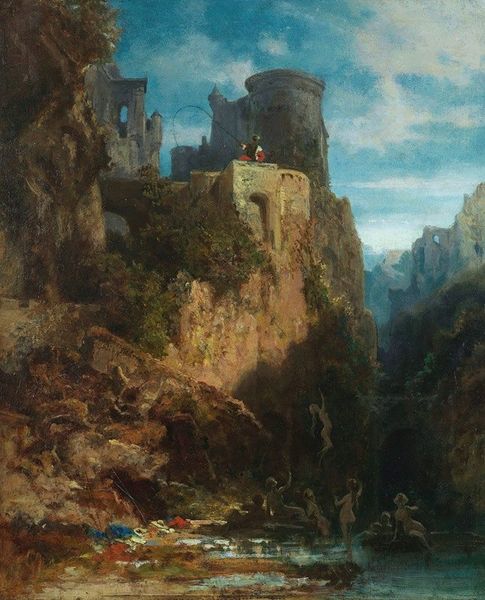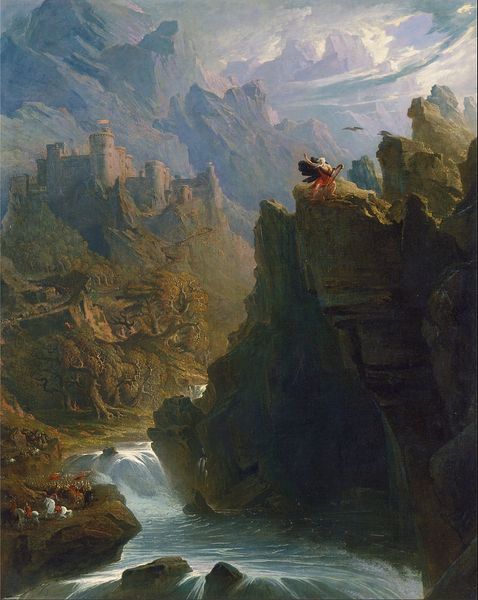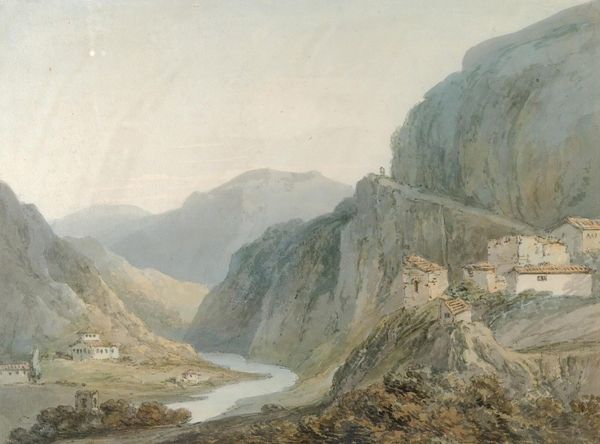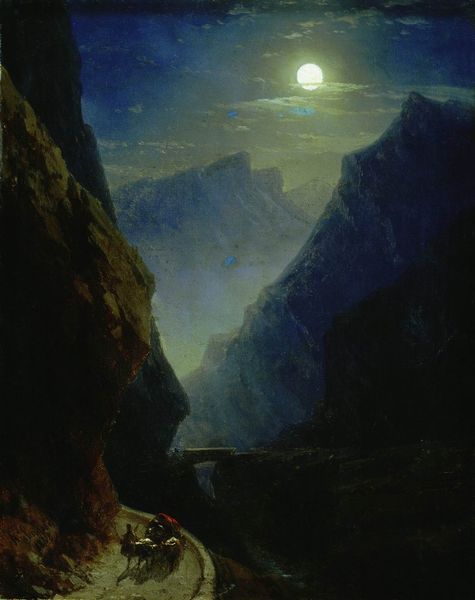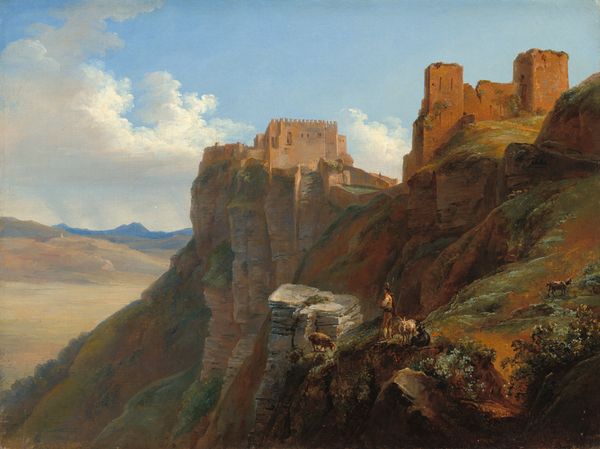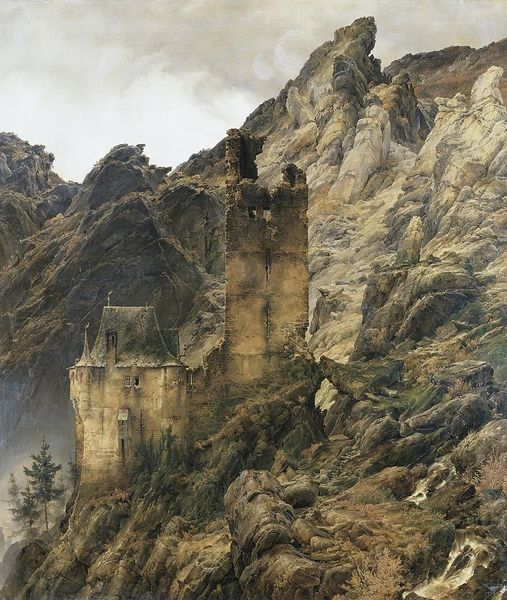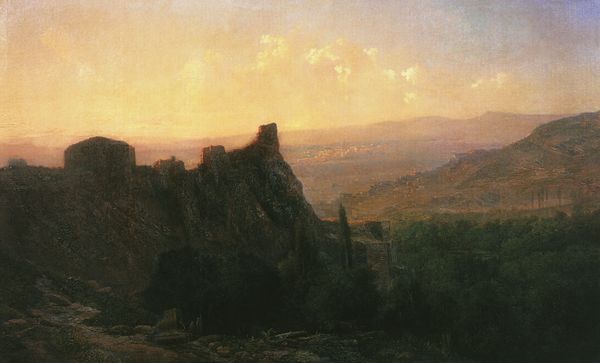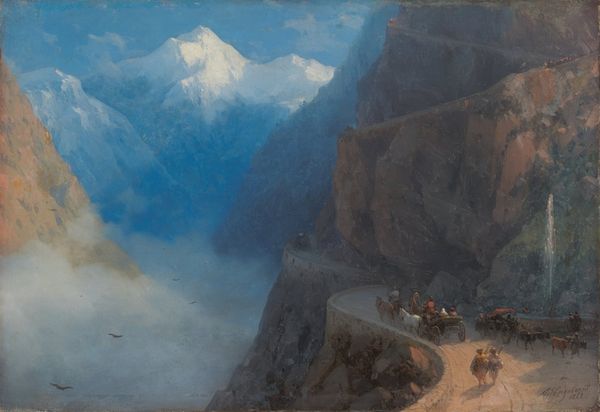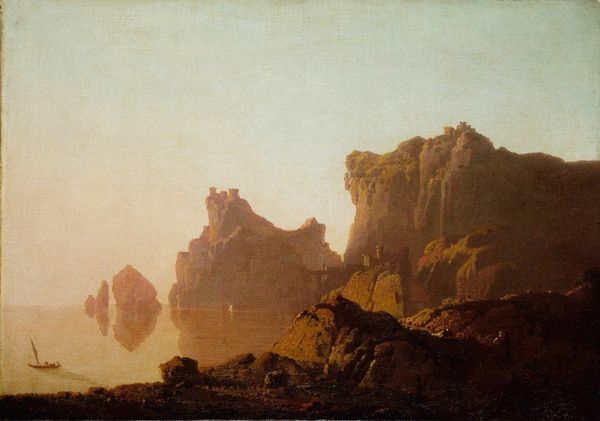
Copyright: Public domain
Editor: This is Ivan Aivazovsky’s “Darial Gorge,” painted in 1868 with oil paints. The massive scale of the gorge is striking, making me feel quite small. What do you see in this piece, especially concerning its context? Curator: I'm drawn to how Aivazovsky depicts this natural formation through the lens of Romanticism but also with clear material constraints. Consider the pigment itself – the sources of those colors, likely mined and processed through specific colonial trade routes, already introduce a narrative of labor and power. The canvas, stretched and primed, is another layer. Editor: That’s interesting. I hadn’t considered the materiality of the Romantic style before. So, the making of this landscape plays a big role in interpreting the piece? Curator: Absolutely. Aivazovsky isn’t just passively representing nature; he is actively engaging with materials extracted from the earth. And let’s consider who could afford paintings like this and whose labour allowed its creation. Think of the transport and the networks to get that pigment. Were they trading routes already mapped to other exploitations? Editor: So, it goes beyond the beauty and becomes a product shaped by these complex systems. It's a manufactured perspective almost. Curator: Precisely. By focusing on the material and its journey, we disrupt the notion of the lone genius and acknowledge the broader economic and social forces at play. Does seeing it this way change your initial feeling of smallness? Editor: It does. I am less focused on the imposing size and more on the network it's tangled in. Thanks for opening my eyes to that different layer. Curator: Indeed. The artwork becomes a map itself – of materials, labour, and power, a stark reminder that art isn't separate from the world; it's deeply embedded within it.
Comments
No comments
Be the first to comment and join the conversation on the ultimate creative platform.

